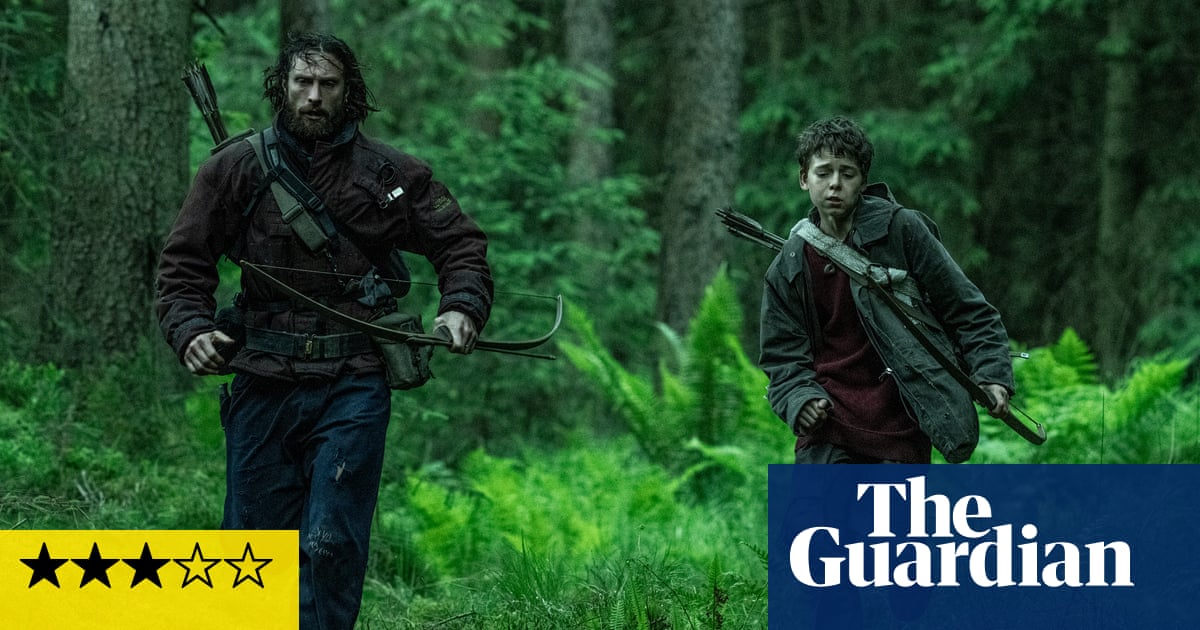Here they are again, Danny Boyle and Alex Garland’s zombies – though unlike the usual stumbling slow-movers, of course, these things can sprint like Tom Cruise on steroids. Back in 2002, screenwriter Garland and director Boyle had a monster hit with theirpost-apocalyptic horror thriller 28 Days Later, about a “rage” virus that leaks from a lab and, turning people into aggressive zombies, causes a complete law-and-order breakdown in 28 days; Boyle famously made smart use of then-new lightweight digital tech which let him bring off miracles of unlicensed guerrilla shooting at dawn in the deserted London streets.
That was fierce, muscular film-making, though I have never been a fan of zombies whose massed presence (then as now) requires silly, gurning, ketchup-strewn extras who can’t be clearly looked at for any length of time without laughing. (For my money it was only Edgar Wright’s zombie horror comedy Shaun of the Dead, which came out two years afterwards, which fully explored the real, intimate horror of zombie-ism: the gap between being bitten and transforming.) In 2007,a lacklustre sequel, 28 Weeks Later,brought the franchise stumbling to a halt.
Now we have 28 Years Later, an interesting, tonally uncertain development which takes a generational, even evolutionary leap into the future from the initial catastrophe, creating something that mixes folk horror, little-England satire and even a grieving process for all that has happened. And there are some colossal cameo appearances.
We are now on Holy Island off England’s north-east coast, where a barricaded, self-governing community grows its own food, brews its own beer and stays apart from the British mainland – which is a lawless quarantined hellhole where zombies roam free, procreating and living off the vast herds of unculled deer. (There is a startling, unintended moment of sadness, incidentally: we get a glimpse of theSycamore Gap treenear Hadrian’s Wall, evidently filmed before it was cut down.)
The Holy Island menfolk make foraging expeditions across the water via the causeway at low tide, killing zombies with bows and arrows to burnish their hunter-gatherer instincts. Some of these zombies are “alpha” runners, but others are slow-movers, natural for target practice: bulbous creatures crawling on their stomachs, resemblingLucian Freud’s painting Benefits Supervisor Sleeping.
Spike (Alfie Williams) is a 12-year-old kid whose adored mum Isla (Jodie Comer) is unwell, confused and depressed. His dad Jamie (Aaron Taylor-Johnson) takes Spike on a sortie to the mainland, a rite of passage which brings him to manhood. But then Spike becomes obsessed with rumours of a “doctor” still living in this danger zone, who carries out bizarre rituals like a cross between Marlon Brando and Dennis Hopper in Apocalypse Now. Spike disobeys all the island’s rules by taking his mum with him out into this forbidden area, on a desperate quest to find this doctor who can cure her.
Holy Island is certainly a fascinating place, ripe for scary film-making (as Roman Polanski showed with his 1966 movie Cul-de-Sac). Garland and Boyle give us some intriguing hints as to how the community has regressed into a kind of fortress mentality, living like a stone age version of the 50s. Archive clips of the archers of Agincourt in Olivier’s Henry V show their subconscious groupthink: pugnacious reliance on ancient warrior craft and a profound mistrust of the French.
But, a little awkwardly, the film has to get us on to the mainland for some badass action sequences with real shooting weaponry – and then we have the two “alpha” cameos that it would be unsporting to reveal, but which cause the film to shunt between deep sadness and a bizarre, implausible (though certainly startling) graphic-novel strangeness, there to promote franchise continuation. So the zombies carry on at their dual speed, intriguing, but going in circles.
28 Years Later is out on 19 June in Australia and 20 June in the US and UK.
